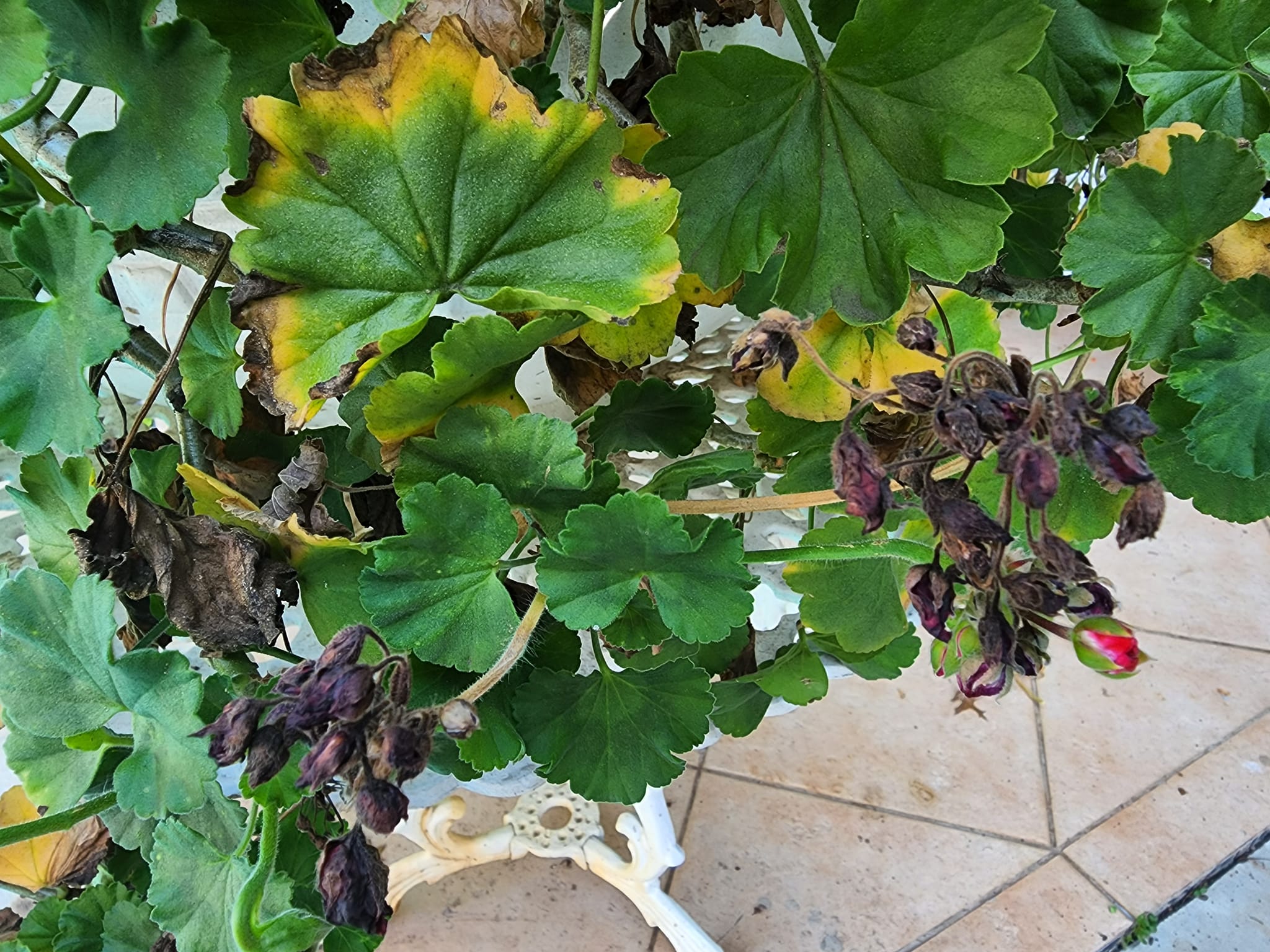
Ah, geraniums. Those cheerful bursts of color grace balconies, patios, and windowsills everywhere. But what happens when those vibrant blooms are overshadowed by a sudden case of the yellows? Don’t despair, fellow plant parent! Yellowing leaves on your geraniums are a common occurrence, but with a little detective work, you can diagnose the culprit and get your flowers flourishing once more.
Unmasking the Mystery: Common Causes of Yellowing Leaves
Just like us humans, geraniums can’t always tell us exactly what’s bothering them. Luckily, the patterns of yellowing often point to specific issues:
Overwatering Blues
Geraniums, hailing from South Africa, are naturally drought-tolerant. So, the number one suspect for yellowing leaves is often overwatering. When the soil stays constantly soggy, it suffocates the roots, hindering their ability to take up nutrients and water. This starvation shows up first in the lower leaves, which turn yellow and may become mushy.
- Signs: Yellowing primarily on lower leaves, wilting stems despite seemingly moist soil, possible presence of fungus gnats.
- The Fix: Hold off on watering! Let the top inch of soil dry completely before giving your geranium a drink. Ensure your pot has drainage holes to allow excess water to escape. In extreme cases, repotting with fresh, well-draining soil might be necessary.
The Sun Snub
Geraniums crave sunshine, at least 6 hours a day ideally. Without sufficient sunlight, they can’t perform photosynthesis efficiently, leading to a breakdown of chlorophyll, the pigment responsible for their green color. The result? Yellowing leaves, often starting from the upper portions of the plant.
- Signs: Yellowing primarily on upper leaves, stunted growth, fewer blooms.
- The Fix: Relocate your geranium to a sunnier spot. If that’s not possible, consider supplementing with grow lights to ensure they get their daily dose of sunshine.
Nutrient Deficiency: A Feast or Famine Situation
Just like us, geraniums need a balanced diet to thrive. A lack of essential nutrients, particularly nitrogen, magnesium, or iron, can manifest as yellowing leaves. In the case of iron deficiency, the veins might remain green while the spaces between turn yellow (interveinal chlorosis).
- Signs: Yellowing throughout the plant, but potentially with green veins (iron deficiency), stunted growth, smaller blooms.
- The Fix: Treat your geranium to a feeding! Use a balanced fertilizer formulated for flowering plants, following the recommended dilution and frequency on the label. Opt for organic fertilizers if you prefer a more natural approach.
When Temperature Takes a Toll
Geraniums enjoy warm weather, but extremes can cause stress and yellowing leaves. Excessive heat can scorch the leaves, while cold snaps can damage the plant’s vascular system, hindering nutrient transport.
- Signs: Yellowing leaves with scorched edges (heat stress), sudden yellowing accompanied by wilting or drooping (cold damage).
- The Fix: During hot spells, provide afternoon shade for your geraniums and ensure they have adequate moisture. If a cold snap is imminent, bring potted geraniums indoors or cover them with frost cloth for protection.
Pests and Diseases: The Unwelcome Guests
While less common, pest infestations or fungal diseases can also contribute to yellowing leaves. Look for signs of aphids, whiteflies, or fungal spots on the leaves.
- Signs: Yellowing leaves accompanied by visible insects (pests) or discolored spots (fungal disease).
- The Fix: For pests, insecticidal soap or neem oil spray can be effective. For fungal diseases, isolate the plant and treat with a fungicide according to the label instructions. In severe cases, removing the affected plant might be necessary to prevent further spread.
Preventive Care: Keeping Your Geraniums Gleaming
An ounce of prevention, as they say, is worth a pound of cure. Here are some tips to keep your geraniums healthy and prevent yellowing leaves in the first place:
- Choose the right pot: Ensure your pot has drainage holes to prevent waterlogging. Consider the size – a pot that’s too large can retain too much moisture.
- Use a well-draining potting mix: Opt for a mix specifically formulated for container plants, which allows for good drainage and aeration.
- Water wisely: Water deeply when the top inch of soil feels dry, and avoid leaving your geranium sitting in water.
- Fertilize regularly: During the growing season, feed your geraniums with a balanced fertilizer
Preventive Care: Keeping Your Geraniums Gleaming
- Deadhead spent blooms: Regularly remove dead flowers to encourage continuous blooming and prevent the plant from putting energy into seed production.
- Prune for air circulation: Good air circulation helps prevent fungal diseases. Pinch off dead or leggy stems and trim back overgrown plants to promote healthy airflow.
- Bring them indoors for winter (if applicable): In colder climates, bring potted geraniums indoors before the first frost. Place them in a sunny location and reduce watering during their winter dormancy.
Conclusion: A Flourishing Future for Your Geraniums
With a little detective work and these handy tips, you can decode the cause of your geraniums’ yellowing leaves and get them back on the path to vibrant health. Remember, happy geraniums mean a happy gardener, so enjoy the process of nurturing these cheerful flowering companions!
